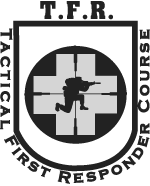Tactical First Responder

Introduction
Be it direct actions, CSARs, defensive operations, foreign nation training, humanitarian/civic action missions possible? Tactical First Responder prepares personnel to realities of bare-knuckles, down-in-the-dirt, remote tactical medicine. Minimum class size is 10. Typically held in NH, this course is mobile training team (MTT)-capable, depending upon location. Length of COI is 10½ academic and field training days over a 12-day period. An answer to team leaders and commanders who want to reduce battlefield deaths.
Topics
- Tactical Combat Casualty Care [TCCC, T-triple-C, TC3]
- Patient assessment system
- Tactical medicine (inclusive of “advanced measures” which include IVs/IOs, surgical airway
- Chest needle decompression)
- Environmental emergencies and medicine
- Medical emergencies
- Expeditionary considerations and medicine
- Patient transport and movement
- Written and practical examinations (FTXs)
Objectives
- TFR teaches non-medically-trained operators how to think–not just what to think–for the medical aftermath of a gunfight.
- It teaches one to become the eyes and ears–the hands–of team PJs/corpsmen/medics.
- It is the way for tactical personnel to be trained for the imposition of casualties on hostile missions.
- It is self-care medicine at the individual operator’s level.
- TFR is mission survival–team survival–when the PJs/corpsmen/medics get slammed and cannot provide the care that is needed.
- TFR’s life-saving medical skills span the spectrum of mission requirement.
- It is an answer to team leaders and commanders who want to reduce battlefield deaths and regretful letters to families explaining, “Why?!“
- Finally, TFR is a tested and proven medical concept on the GWOT battlefield.
- TFR saves lives.
